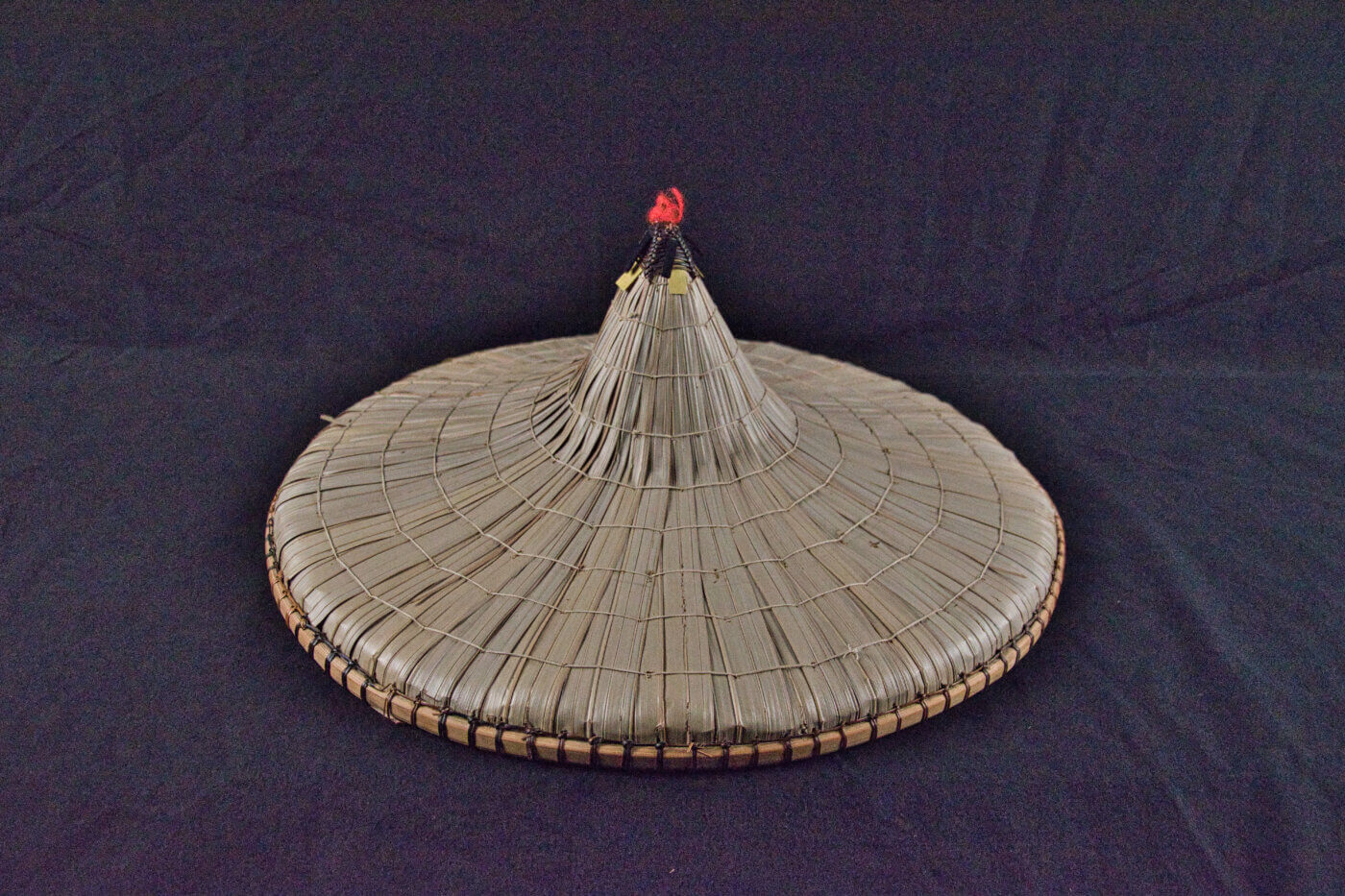Hat (Salakot) Philippines, ca. early 20th century
What specific job do you think this hat was worn for? This is the traditional type of hat worn by rice paddy farmers in South Asia and Southeast Asia. Made of stitched together palm leaves over a bamboo stick frame and decorated with colored straw, paper, and cotton, it is a simple conically shaped hat worn for protection from the sun and rain.

This rice hat was made in Los Banos, Philippines in the early 1900s. Rice hats have been worn in Southeast Asia for thousands of years by rice farmers to protect them from the sun and rain, but the design, size, and shape has differed greatly over time. There are now more than 50 different versions of rice hats found in the world, with different names depending on where you are. The Filipino name for it is salakot, meaning “native hat.” You may probably notice that this hat is very simple in design and decoration, which is typical for those worn by farmers. After the 16th century, some salakots were made with decorations such as tassels, beads, feathers, jewels, and precious metals, and were worn by the wealthy and upper-class Filipinos. Although this hat does have some decoration, the small amount and the type of material used (colored straw, paper, and cotton) identify it as a farmer’s hat. Learn more about our Collections: https://www.slsc.org/collections-department-overview/
See more Artifacts of the Week








